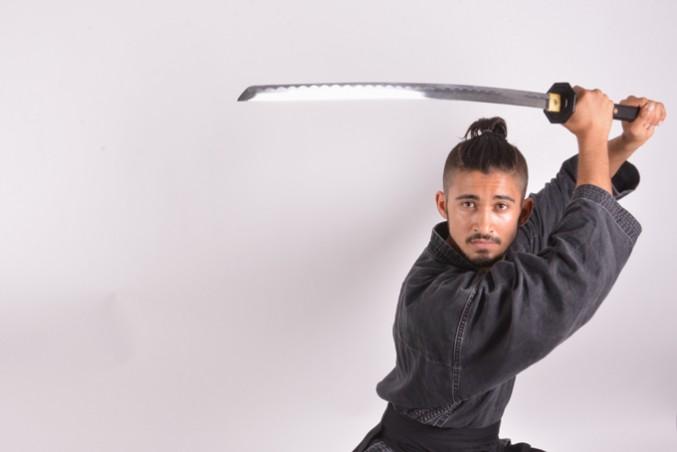By Brandon Buechler
Ninjas. Black clothing with facemasks and throwing stars. Japan’s ultimate assassin — merciless in their tactics, even more so in their pursuit of a target.
Or are they?
“A lot of people think that ninjutsu or being a ninja is all about throwing ninja stars into people’s eyeballs, or assassinating everyone. [Our] primary principal is actually something called seishin teki kyoyo or ‘spiritual refinement,’” says Armaan Verma, lead instructor at Ryerson’s ninjutsu club. “The best thing to do in a fight, is not be there at all, combat or taijutsu, for us, is actually tertiary.”
Verma says the original ninjas, or shinobi, meditated quite often despite their violent clandestine operations.
“The purpose of ninjutsu is to become a better person,” Verma says. “We’re very focused on self-awareness.”
He says one of the core teachings of his school is avoiding the fight all together and honing one’s senses to recognize threats before it becomes physical. Much of this, at its core, comes down to using your intuition and trusting your gut. Verma describes it as listening to that feeling that says maybe you shouldn’t go to the club tonight, or walk down that dimly lit alleyway. But if it comes to a fight, Verma ensures his members are prepared.
“It’s about teaching someone how to not get in an altercation in the first place, which we call intention sensing training. I like to equate it to using your spidey senses,” said Verma. “But I also want to be able to train my students so they have the skills to effectively and efficiently protect themselves if their back’s against the wall.”
Verma decided to start the process of creating Ryerson ninjutsu’s club last year, after training in the art for the past eight years. It was at the recommendation of his mentor who felt the time for Verma to pass on his training had come. To train in ninjutsu at Ryerson Verma says there are three main principles to follow: always strive to be a good person, learn and grow whenever possible and always try and help those in need.
According to historians, ninjutsu’s lineage has been recorded as far back as the 12th century, to The School of the Hidden Door. Many believe it to be the basis for the ninja training we know today, focusing on anything from woodlands survival to advanced espionage.
One of Verma’s newest students, Tom Tran says the club has not been what he expected.
“I had an idea of it from some of the anime that I’ve watched, and [I] expected some of that, but there’s a lot more to it,” Tran said. “It’s a different style than how they do it on television.”
Verma’s specific form of ninjutsu is something called hoshindo ninpo taijutsu, or ninjutsu with a focus on self-development and urban survival. But of course combat isn’t ignored.
“In terms of technique students learn throws, locks, holds, groundwork (grappling) and various strikes,” Verma said. “A lot of it [striking] has been influenced by Bruce Lee.”
But despite the martial artist’s influence, ninjutsu holds true to its core teachings. After earning their white belt — nothing is given, not even a white belt — students move onto the Godai, a Buddhist-based philosophy.
In the Godai, the students train from the five elemental books: the books of earth, water, wind, fire and finally, void. Each book has a corresponding belt, with void being the final challenge before a student is granted a black belt. According to Verma, to complete the five books and attain their black belts, students can be expect to practise and train for five years.
“Each element has its own persona, its own way of applying techniques,” Verma says. “And when students grade for their ranks, they’re not just grading physically.”
He says students must complete readings from books written by masters like Sun Tzu and Miyamoto Musashi and then complete a written assessment.
“It’s a mind, body and spirit type thing. It’s a whole package,” Verma says.
Despite the rigorous mental and physical training a student goes through, Verma believes anyone with conviction can excel in the art.
“We’ve had [veterans] and we’ve had people with no experience and everyone takes something away from this.”











Leave a Reply